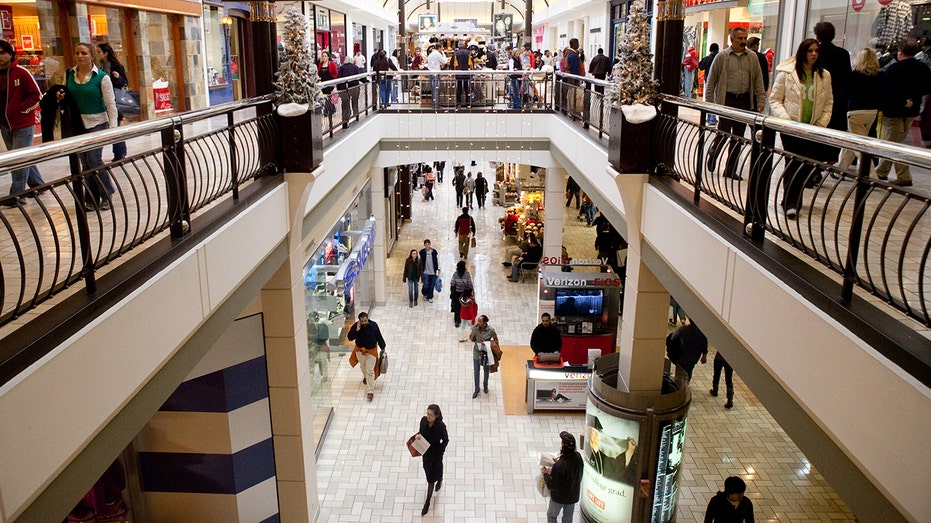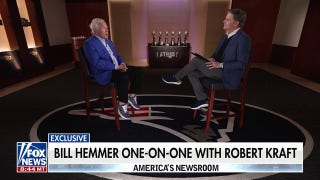A key gauge of future inflation is easing
After soaring since October, public and bond-market expectations of inflation have fallen back, suggesting sustained higher prices are less likely
One of the most important signals of future inflation has begun to ease in the past month, a development that should reassure the Federal Reserve in its prediction that the recent inflation surge will prove largely temporary.
That signal is so-called inflation expectations: what businesses, consumers, workers and investors expect inflation to be over the next one to 10 years. Because such expectations can be self-fulfilling, economists consider them key to where inflation is going.
Expectations are tracked through a range of surveys and market-based measures, and most are telling the same story. After rising sharply from October through May, they have now begun to ease.
DOW 35,000: INSIDE THE CLIMB AHEAD OF THE FEDERAL RESERVE MEETING
The median expectation of inflation during the next year for consumers surveyed by the University of Michigan shot to 4.8% this month, the highest since August 2008. However, consumers’ one-year expectations are strongly influenced by today’s inflation rate, now a 13-year high of 5.4%. A more-reassuring message comes from their expectations for five to 10 years from now: That came in at 2.9% in early July, down slightly from 3% in May and close to the average of 2.8% in surveys from 2000 to 2019.
Bond investors also don’t seem to be betting on a sustained jump in inflation, based on the "break-even inflation rate"—the difference between the yield on regular Treasury bonds and on inflation-indexed bonds. The break-even rate over the next five years has dropped 0.19 percentage point since mid-May; the rate over the following five years has dropped 0.21 point.

ne of the most important signals of future inflation has begun to ease in the past month, a development that should reassure the Federal Reserve in its prediction that the recent inflation surge will prove largely temporary. Photo by Brendan Hoffman/
Moreover, since January the five-year break-even inflation rate has been higher than the 10-year rate, the first time that has happened consistently since 2008. "What the markets are saying is, ‘We think there’s inflation in the near term, but eventually it’s going to ease and go back to [the Fed’s] 2% target—maybe be a little above, but it will certainly not remain elevated,’" said Kathy Bostjancic, chief U.S. financial economist at Oxford Economics.
Business inflation expectations have declined, too, since May, as tracked by the Federal Reserve Bank of Atlanta’s monthly survey of around 300 businesses in six states. Companies expected 2.8% inflation a year from now in early July, on average, down from 3% in June, though up from the average of 1.9% from 2012 to 2019. The survey measures businesses’ expectations of their own costs, which may not translate to selling prices.
In theory, individuals and businesses set prices and wages based on what they expect inflation to be in the future. Thus, expectations can be self-fulfilling. "Consumers say, ‘Inflation is going up—I’m going to have to pay higher prices,’ and go to their employers and ask for higher wages," Bostjancic said. Businesses see that rising inflation gives them room to raise prices and grant raises, recouping those increased costs by charging more, she said. "It’s intuitive but also borne out by empirical evidence."
In the Fed’s economic models, inflation is largely determined by slack—how much labor and business capacity is going unused—and inflation expectations. "There is broad agreement that achieving price stability on a sustainable basis requires that long-run inflation expectations be well anchored at the rate of inflation consistent with the price-stability goal," said Richard Clarida, the Fed’s vice chairman, in an April speech.
INFLATION INFLICTING NEAR-TERM PAIN, BUT PROMISES LONG-TERM GAIN FOR SENIORS
In the 1960s, economists thought there was a trade-off between inflation and unemployment—a relationship called the Phillips curve—and policy makers could lower unemployment by allowing higher inflation. But scholars such as the late Nobel Laureate Milton Friedman argued that workers would respond to higher inflation by expecting, and receiving, higher wages, which would tend to push unemployment back up to its old level. That is what happened in the 1970s: Unemployment went up but inflation didn’t go down, because expectations were high.
Conversely, low, stable expected inflation over the 10 years before the coronavirus pandemic may explain why the Fed struggled to bring inflation consistently up to its 2% target even as unemployment fell to historic lows. Last year, inflation expectations plummeted as the economy sank into recession. But as the economy rebounded, so did expectations, to above pre-pandemic levels.
That could be good news for the Fed, said Tim Duy, chief U.S. economist at SGH Macro Advisors, because it could help the Fed keep inflation on its 2% target. (Based on historical patterns, expected inflation slightly above 2% would still be consistent with actual inflation at 2%.)
The Fed’s staff has compiled a "Common Inflation Expectations" index from 21 measures of inflation expectations, including short- and long-term indexes from consumers, markets, businesses and professional forecasters. That index in the second quarter was at levels that prevailed in 2014, a time when inflation was modest, the Fed indicated in minutes of its June meeting.
But some economists worry inflation expectations could rise steadily from here. Trillions of dollars in federal pandemic relief and ample household savings have helped buoy demand. That, along with pandemic-related supply chain disruptions, is giving businesses more pricing power than they have had in decades, said Joel Naroff, chief economist at Naroff Economics LLC.
INFLATION CHECK: THESE COMPANIES ARE RAISING THEIR PRICES
"What that could lead to is extended periods of raising prices rather than fear that if they raise prices they’ll lose market share," he said.
That fear may indeed be receding. A year ago, raising prices was the last thing Aaron Pool wanted to think about. When the founder and co-owner of the Gadzooks Enchiladas and Soup restaurants chain in Arizona raised the price for two enchiladas by 25 cents in 2013, he faced customer backlash.
Emerging from lockdown in the spring of 2020, a state minimum-wage law and higher commodity and delivery costs pushed him to raise prices. Yet demand stayed strong.
"I believe inflation is real because customers haven’t said a peep about it," Pool said. "It’s $9.25 for two enchiladas right now. We joke we could probably raise it to $13 and people would pay it."
Anmol Sahai, of Brooklyn, N.Y., noticed prices at restaurants and bars in the city shooting up a few months ago. The price for a morning Uber soared to more than $40, nearly double the pre-pandemic rate.
"I feel like May was the first time I was like, ‘Oh my god, this is getting out of hand,’" said Sahai, who is 25 years old and works as a paralegal.
In his case, though, higher inflation hasn’t yet changed his behavior in a way that suggests his expectations are becoming unanchored. He cut back on dining out and now takes the subway to work. But while Sahai is planning to ask for a raise soon, he doesn’t connect that to higher costs.
GET FOX BUSINESS ON THE GO BY CLICKING HERE
"I’ll ask for more, regardless, but how much will [inflation] influence that? Not much," he said. "I think of them differently: There’s my job on one side and how much I spend on the other."




















